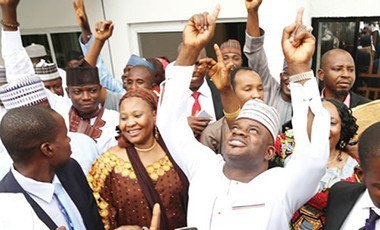CLIMATE science has progressed so much that specialists can precisely detect global warming’s fingerprints on certain extreme weather events, such as a heat wave, based on a high-level scientific advisory panel.
According to MailOnline experiences, for years, scientists have given virtually a rote response to whether or not a bizarre climate event was caused by global warming, insisting that they cannot attribute any single occasion to climate change.
But ‘the science has superior to the purpose that that is now not true as an unqualified blanket assertion,’ the National Academies of Sciences, Engineering and Medicine reported.
Starting in 2004, dozens of complicated, peer-reviewed studies discovered that the chances of some extreme occasions—however certainly not all—had been goosed by man-made local weather change.
This new subject of discovering global warming fingerprints is scientifically legitimate, the academies mentioned in a 163-page report launched Friday.
The personal non-profit has suggested the federal government on complicated, science-oriented issues since President Abraham Lincoln’s time.
When it involves warmth waves, droughts, heavy rain and other occasions, scientists who do rigorous analysis can say whether or not they were more probable or more extreme due to man-made global warming, said academies report chairman David Titley, a Pennsylvania State University meteorology professor. And that issue.
‘While we plan for local weather, we reside in climate,’ Titley, a retired Navy admiral, mentioned in an interview. These extremes are making local weather actual when they’re attributable to climate change.
Based on the report, not all bizarre climates may be blamed with any degree of certainty on global warming.
The report discovered that hurricanes, tropical cyclones, wildfires, and extreme thunderstorms are on the low end of the boldness range.
In some circumstances, warmth and lack of rain mix, and the research discovers a viable connection to world warming, comparable to the latest four-year California drought and the drought that hit Syria and its neighbours, Titley mentioned.
‘The fog of uncertainty that obscured the human position in particular person occasions is lastly lifting,’ mentioned Princeton University professor Michael Oppenheimer.
Although he wasn’t involved in the study, he is on the board of Climate Central, which manages a major local weather attribution challenge.
Good attribution research is primarily based on what Titley calls a ‘three-legged stool’ of observational data of a long time of previous occasions, a detailed understanding of the physics that trigger the bizarre climate itself, and complex laptop fashions that simulate the probabilities of the acute occasion if there have been no man-made, heat-trapping gases warming the environment.
‘It’s similar to a post-mortem,’ mentioned Martin Hoerling, a National Oceanic and Atmospheric Administration analysis meteorologist who has carried out several attribution studies, discovering a local weather change connection on some occasions and never discovering a hyperlink in others.
‘We’re following the info wherever it goes.’
Titley mentioned attribution research is ‘primarily based in bodily science and statistics that do not worth Republicans or Democrats.
‘The ice simply melts. This has nothing to do with politics.’
This research does not say an occasion was 100% brought on by local weather change. It often says possibilities were elevated by a certain fraction.
Katharine Hayhoe, a Texas Tech local weather scientist who wasn’t a part of the examine, praised the work: It is ‘crucial to make clear to individuals how no occasion is black or white: No particular person climate occasion may be mentioned to be ‘solely’ human nor ‘solely’ pure any extra. They are someplace on the sliding scale between.’
But different scientists don’t love the thought of single occasions.
Climate change brought on by man ‘has fingerprints in each climate occasion we expertise at the moment,’ wrote Oklahoma University meteorology professor Jason Furtado, who wasn’t a part of the study. ‘Disentangling the contribution of local weather change with pure variability for a single occasion shouldn’t be fruitful or presently potential in my view.’
Titley hopes that the science of local weather change fingerprint detection will advance eventually so that meteorologists can make testable forecasts of a certain variety of excessive occasions in a season.











